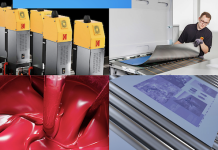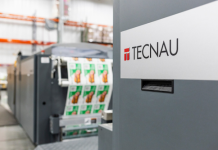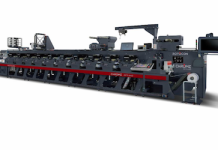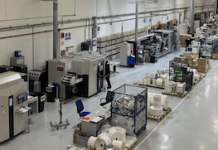According to Laurel Brunner of the Verdigris Project, the ISO 16759 document outlines requirements for calculating the carbon footprint of a print run and it was published in 2013. Since then it has done well with printers bold enough to take the plunge. And now, when it comes to services that implement the standard, ISO 16759 is becoming flavour of the month.
Advanced UK is a Xerox owned company which provides Environmental Social and Governance (ESG) and carbon footprinting services to business communities, including the print sector. The company has client base of 900, 100 of which are in the graphics sector. Advanced UK has recently introduced a vendor agnostic carbon neutral printing solution to help printers capture more business on the basis of their sustainability and offsetting activities.
The service combines a German carbon calculator based on ISO 16759 and offsetting, with a fully accredited certification for what Advanced claims is climate neutral printing. The programme was developed by BVDM, Germany’s printing industry association, and Print XMedia a consulting company that works with BVDM.
Climate Initiative involves three steps starting with balancing existing CO2 emissions based on recommendations from Print XMedia and carbon calculations. Using ISO 16759 for print run specific calculations, the calculator and assessment also complies with ISO 14040 and 14067. An online password protected account steps the user through the calculator to capture company information, energy, transportation and production data.
The system uses preloaded databases for substrates, computer-to-plate systems, inks and toners, presses and postpress equipment. Company data captured includes the number of people at the plant, energy usage for facilities and machines and its sources, and transportation. Input and output flows relating to materials and substances are included in the calculation. Energy and transport are worked out for materials as well as employees, as is the load for all phases of print production and waste disposal (incineration and recycling). Crucially the data and assessment document can be used to help a printing company’s customers assess their Scope 3 emissions. These are the emissions over which a company has no control, so collecting data can be problematic.
Step 2 is all about improving a company’s energy balance for both overall energy efficiency and cost reduction. Step 3 is when CO2 emissions offsetting happens based on the fully accredited certification. Printing companies can select from a range of different projects and have right to use the Climate Initiative logo. They can also share certificates with customers. The programme is supported by the German Ministry for the Environment and over 250 printing companies in Germany have joined the project. It costs about R46 871 (€2000) per annum to use the platform, plus a premium per print job which can be charged to the print buyer.
This article was produced by the Verdigris Project, an industry initiative intended to raise awareness of print’s positive environmental impact. Verdigris is supported by: FESPA (www.fespa.com), Fujifilm (www.fujifilm.com/sustainability/), HP (www.hp.com), Kodak (www.Kodak.com/go/sustainability), Practical Publishing (www.practicalpublishing.co.za), Miraclon (https://miraclon.com), Unity Publishing (http://unity-publishing.co.uk) and Xeikon (www.xeikon.com).
THE VERDIGRIS PROJECT
http://verdigrisproject.com/





















